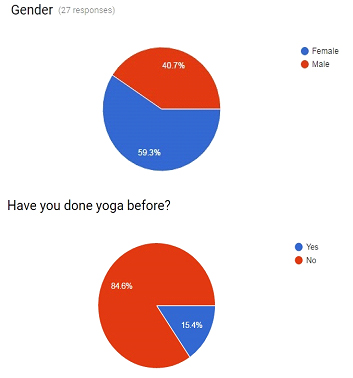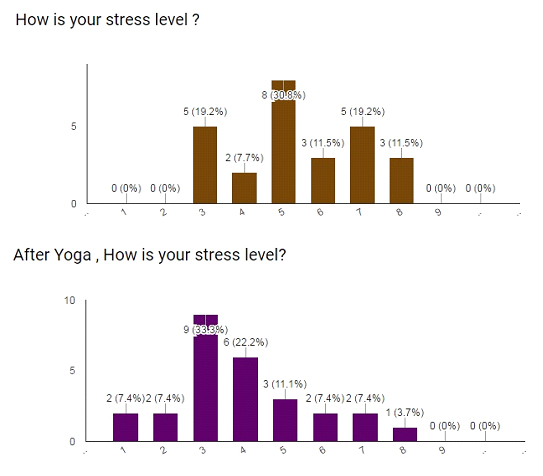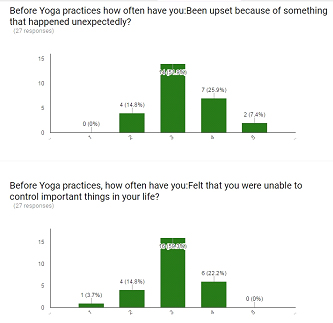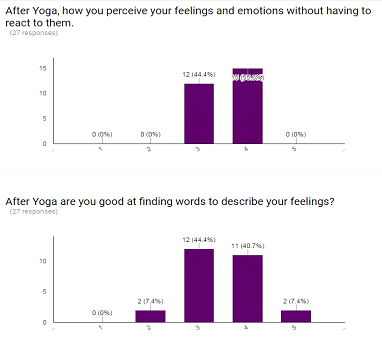Embracing Harmony with Yoga Throughout Pregnancy
That positive test result in your hands brings out immense joy and gratitude for this priceless gift. For some it is planned while others may be a surprise! Either case, there is so much of anticipation to receive this bundle of joy in your arms. But it’s a nine-month journey. Along with the excitement, comes many changes to a mother’s physical body. She goes through different phases across three trimesters to cope with the growing fetus inside of her. Not to mention the various medical check-ups, advise from relatives and influence from social media, so much of information to digest. She needs to be physically and mentally strong to decide what’s best for her and her baby.
Every pregnancy is unique and full of surprises; hence a mother needs to keep a balanced state of mind to face these challenges. Yoga is a beautiful tool to support a mother throughout her pregnancy with the various techniques of asanas, pranayama and yoga Nidra.
Did you know, that yoga can alter the nervous system regulation and physiological system functioning for an example, immune, endocrine, neurotransmitter, and cardiovascular? It also improves the psychological well-being such as frequency of positive mood states and optimism. Lastly, physical fitness improves strength, flexibility, and endurance (Wren AA et al., 2011).
Through practicing asanas, it helps tone and strengthen the body preparing for child birth. Besides that, it improves blood circulation which helps to keep the baby active and healthy at all times. During gestation period, the mother’s blood has additional task to perform. It has to carry nutrients through the placenta and deliver them to the fetus at the same time remove any waste. That is why pregnant ladies are prone to high blood pressure due to the increased heart rate. By keeping an active lifestyle and a balanced diet will help them progress seamlessly through the pregnancy.
A simple asana such as Supta Udarakarshanasana (Sleeping Abdominal Stretch), can help to relax the pelvic region and stretch the lower back which are common areas of discomfort during pregnancy due to the increasing weight of the fetus. Simply sitting in Vajrasana (Thunderbolt pose) it improves digestion and prevents swollen ankles. Just like magic!
Simple yet impactful practices comprised in yoga to help a mother travel through her journey with harmony and love. Love for herself and love for her growing child.
To love someone, we need to connect to them. A connection of a mother and her child starts from the womb – they are physically and emotionally connected. The fetus inside a womb can feel every emotion and thoughts going through the mother. That is why in every culture, they have celebrations and rituals to make the expectant mother happy and joyful at all times. This may be by cooking her favorite meals and singing to her. Some beliefs also avoid conveying bad news to her and even keep away awful images as they believe it will affect her mental state and indirectly affecting the child. That is how important it is to be present mindfully and cultivate positive and happy thoughts during the childbearing period.
An active ingredient in pregnancy yoga is mindfulness. Constantly being aware of your thoughts, the thoughts you want to convey to the child inside of you. It starts from day one in the first trimester. Do not hesitate to send him/her mental kisses, loves and hugs, they will definitely receive them through the positive vibrations in your body when you practice Yoga Nidsra, awareness and meditation.
Performing these relaxation techniques increases your happy hormones such as dopamine and serotonin, which indirectly promotes growth and healthy fetal development. Stress has adverse effects on a fetus. It effects their birth weight, brain development and even the length of the gestation. It is HIGHLY recommended to childing mothers to prioritise pranayama for internal purification, Yoga Nidra for complete relaxation mentally and physically and positive visualisations to increase will power and mental strength.
The beauty of pregnancy yoga is that it prepares you for “The” day, the day of your child’s arrival. It teaches you to mentally prepare yourself to have a smooth and safe delivery. These positive resolutions and mental images you practice also keeps you attune to your desired experience at the delivery room. Keeping you motivated, confident and most importantly resilient in overcoming any challenges that pops up during this time of uncertainties. Not only the mother, but the child is also prepared to work together with his/her mom as they have also been through the conscious practice of visualisation.
An essential tool to carry with you at the hospital throughout the contraction pains and right up to giving birth is Pranayama (breathing techniques). A predominant practice that helps ease your fears, anxiety, pain and stress during this crucial moment of child birth. Continuous practice from the beginning of pregnancy makes it natural for the mother to behave in a relax and calm manner as she experiences the energy flowing through her and assisting in a wholesome state of mind which creates a welcoming force for the baby to finally meet the world! A moment that is cherished by every mother arrives when her baby is laid on her chest and they finally get to meet their little creation.
Child birth alters a women’s body and mind hence it’s important to be prepared for that journey and acquire the knowledge to go through this phase of life. The best gift a women can give herself is the gift of love and care for herself in order to care for her loved ones. It’s not about the destination, but it’s about the journey. Pregnancy yoga helps make that journey beautiful and creates a special bond between the mother and child.
References:
- Wren AA, Wright MA, Carson JW, Keefe FJ. Yoga for persistent pain: new findings and directions for an ancient practice. 2011;152(3):477–480. [PMC free article] [PubMed] [Google Scholar]
This article was featured in YogaMail Jul-Dec 2024 issue.




